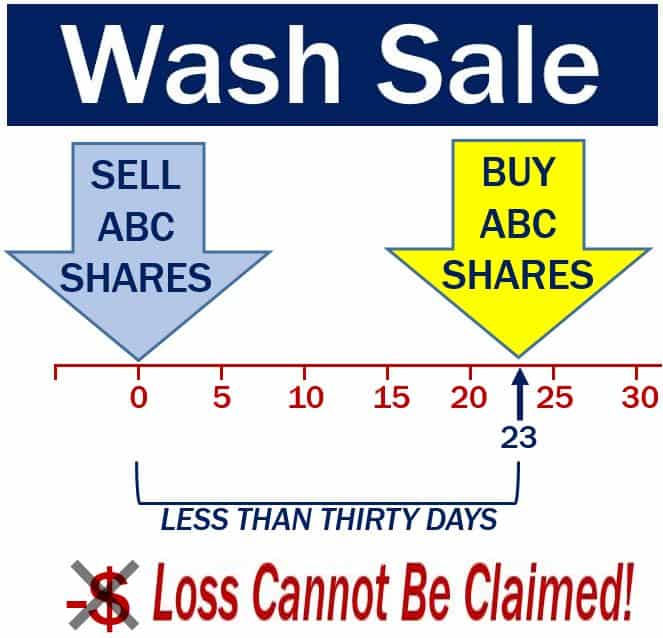A wash sale happens when an investor sells or trades poorly-performing securities at a loss, and then within the next thirty days purchases substantially identical securities, or acquires a contract or option to purchase substantially identical securities.
In other words, you sell shares at a loss and then buy them back within thirty days.
A wash sale is a method used by investors to try and recognize a tax loss while actually not changing their position.
The benefit of this transaction used to be to help achieve a lower tax deduction on the loss incurred on the poorly-performing investment. The transaction is not illegal.
Do not confuse this term with Wash Trade, which is illegal.

Wash sale strategy no longer advantageous
However, many countries’ tax authorities today, including the United States Inland Revenue Service (IRS) and the UK’s HM Revenue & Customs, prohibit people from deducting losses associated with wash sales.
In the US, the IRS 30-day wash rule states that taxpayers cannot recognize a loss on an investment if that particular investment was purchased within thirty days – before or after – the sale.
According to the US Securities and Exchange Commission (SEC):
“A wash sale occurs when you sell or trade securities at a loss and within 30 days before or after the sale you:
- Buy substantially identical securities.
- Acquire substantially identical securities in a fully taxable trade.
- Acquire a contract or option to buy substantially identical securities.
Internal Revenue Service rules prohibit you from deducting losses related to wash sales.”
Example of wash sale
Imagine that you purchased 100 shares at John Doe Corp. at $100 some time ago. The stock has fallen to $60, and you sell them to take the loss deduction.
However, you then hear some good things about John Doe, and buy those 100 shares back for $64 less than thirty-one days after you had sold them.
You cannot deduct your $40 per share loss. But you add $40 per share to the basis of your replacement shares. Those shares have a basis of $104 per share – the $64 you paid, plus he $40 wash sale adjustment, i.e.you are treated as if you purchased the shares for $104.
If you end up getting $110 for them when you sell them, you only report a gain of $6 per share. If you sell them for $64 – exactly what you paid for them on your second purchase – you will report of loss of $40 per share.
